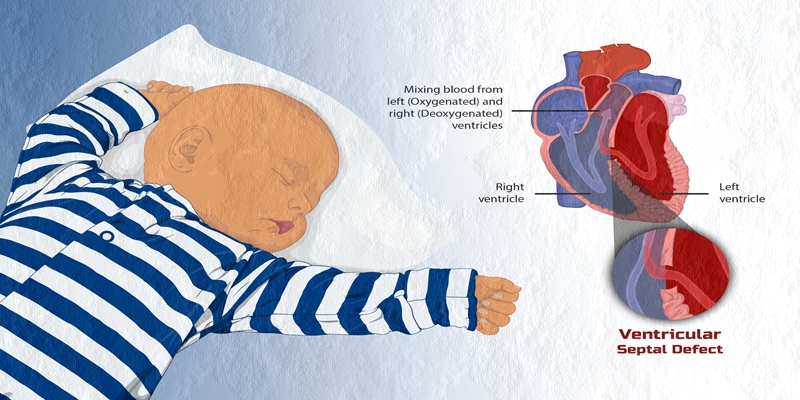Heart Diseases in Children: A Real Challenge in Somalia

In Somalia; around 7000 babies are born annually with a congenital heart defect.
According to 2020 World Bank data, Somalia's population is about 16 million, and the crude birth rate is estimated at 42/1000. This gives a rough estimate of 672,000 live birth per year. If the incidence of congenital heart disease is 1/100 - or 1% - we can estimate that 6,720 babies have some form of heart defect every year.
Unfortunately, since the collapse of the central government in 1990, the country has not established a robust health system and primary healthcare access is minimal. There is currently no single cardiac center in the country to handle any congenital heart diseases, and few of these children can access care abroad.
Congenital heart disease
Congenital heart disease (CHD) is the most common birth defect in children. CHD occurs when children are born with structural abnormalities in their hearts. CHD is common and affects one in every hundred live births. Globally the incidence of CHD is equal within the developed and developing worlds. However, it will occur more often in regions where the birth rate is higher. Typical examples are the “holes” in the walls separating the two sides of the heart (e.g. Ventricular Septal Defects (VSD), Atrial Septal Defects (ASD), malformed heart valves (absence or narrowed) or chambers, and distortion or obstruction of the main arteries leaving the heart and taking blood to the body.
Congenital heart disease is one of the leading reasons babies are admitted to pediatric intensive care. It’s also a leading cause of infant death and severe disability in children under five. This is exemplified in low-income countries.
The root causes of most congenital heart diseases are still unknown, but genes and environmental and exposure to teratogens are aspects that researchers have focused on. It is more often seen in syndromes (e.g. down syndrome), maternal exposure to certain infections (rubella), maternal diseases (e.g. Diabetes Miletus), maternal drug use (e.g. Warfarin, Alcohol, etc.) and others.
Prevention
The total prevention of CHD is impossible where the clear aetiology is not known. Using folic acid during pregnancy might provide specific protection of malformations neurological and Heart defects). Avoiding alcohol, smoking and certain drugs during pregnancy, maternal vaccination against rubella, controlling maternal disease during pregnancy may reduce the risk of having CHD
Management
Fortunately, most children with congenital heart disease have minor abnormalities that might be discovered during a child’s routine examination. It may close on its own and may not require medical intervention. Others might have more complex heart abnormalities that can critically impact the wellbeing or survival of the child.
Many complex congenital heart diseases can be identified before birth, in the antenatal period by a Fetal Echocardiography performed in pregnancy, and proper planning can be made; however, these procedures are not available in most low-income countries.
Babies and children with complex congenital heart disease need intervention by a highly skilled and sophisticated team; pediatric cardiologists, pediatric cardiovascular surgeons, pediatric intervention cardiologists, cardiac anesthesia and cardiac intensive care, as well as trained cardiac nurses. The care may be single curative but significant intervention, open heart surgery or catheter-based device closure intervention. In contrast, others need a palliative series of operations and catheter interventions throughout infancy and childhood.
Arrhythmias
Apart from the structural defects, abnormalities of the heartbeat (arrhythmias) can occur at any time in life. These occur in childhood, resulting in abnormal and occasionally heart rhythms (Tachy-arrhythmias and Brad-arrhythmias). This may necessitate medication and sometimes cardiac catheterization (long “wires” inserted in an artery or vein and threaded through the blood vessels to the heart); it can be curative, leading to a “normal” quality of life. Certain rare types of arrhythmic conditions have no cure. Pacemakers (external devices) may be needed to sustain average heart rate, or implantable cardiac defibrillators are used to deliver corrective shocks.
Cardiomyopathies
Cardiomyopathies are diseased heart muscles (thickening or weakness) that can be genetic. Some of these conditions can cause sudden death, especially during competitive exercises. Early detection, medical and counselling provide protection and preservation of life. In rare cases, a heart transplant will be needed as definitive palliative care.
Acquired heart disease
In a structurally normal heart, heart disease may also develop (or be acquired) in children. For example, rheumatic heart disease (RHD) can be caused by recurrent upper airway infections due to bacterial (Streptococcal Group A) infections. The disease is endemic in low-income countries but preventable if the infections are correctly treated (primary prevention) or antibiotic prophylaxis to avoid heart disease (secondary prophylaxis). If heart damage happens, it can be treated medically or surgically according to the stage. Kawasaki disease is another disease - which causes inflammation of the blood vessels throughout the body - that may affect the blood vessels supplying the heart itself. Muscle damage after certain viral illnesses can also weaken and reduce the heart's function (such as myocarditis) and is the leading cause of dilated cardiomyopathy in children.
Detection, prevention, and management of cardiovascular diseases require vast resources, including infrastructure, equipment, trained and retained human resources, proper planning, and a reliable and sustainable source of income.
Somalia's health care has relied on out-of-pocket expenses, and treatment of complex cardiac disease cannot be handled in this manner. Generally, I believe the countries health challenges can be addressed through health insurance. However, to reduce the current burden of congenital heart disease in Somalia, we call for local and international sponsors to help identify children born with heart defects and had not received diagnostic, treatment and intervention for the last three decades in Somalia.
By Dr. Mohammed AM Ahmed
Fellow/Paediatric Cardiology @ Basaksehir Sehir Hastanese, University of Health Sciences, Istanbul- Turkey. Uganda Heart Institute Kampala- Uganda. Faculty of Medicine and Surgery Mogadishu-University. Mogadishu Somalia.
E-mail: drsuufi@gmail.com
Courtesy:Hiiraan
